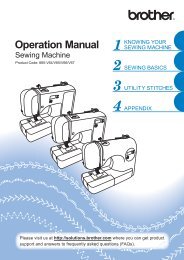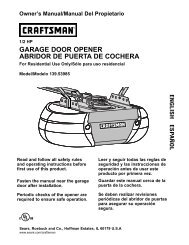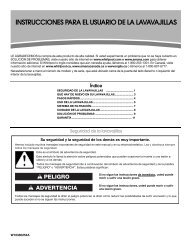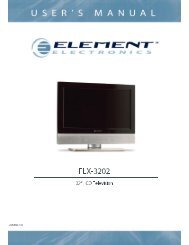Satellite® T210/T230 Series User's Guide - Howard Computers
Satellite® T210/T230 Series User's Guide - Howard Computers
Satellite® T210/T230 Series User's Guide - Howard Computers
Create successful ePaper yourself
Turn your PDF publications into a flip-book with our unique Google optimized e-Paper software.
208 Glossary<br />
G<br />
H<br />
folder — Also called directory. A container for organizing files saved to<br />
a disk. A folder is symbolized on screen by a graphical image (icon)<br />
of a file folder. A folder can contain files and other folders.<br />
format — (verb) To prepare a blank disk for use with the computer’s<br />
operating system. Formatting creates a structure on the disk so the<br />
operating system can write information to the disk or read<br />
information from it.<br />
frontside bus — The primary pathway (bus) between the CPU and the<br />
computer’s main memory. Also called “system bus.” See also bus.<br />
function keys — The keys labeled F1 through F12, typically located on<br />
the keyboard. Their function is determined by the operating system<br />
and/or individual programs.<br />
ground — A conductor to which all components of an electric circuit are<br />
connected. It has a potential of zero (0) volts, is connected to the<br />
earth, and is the point of reference for voltages in the circuit.<br />
hard disk — A storage device composed of a rigid platter or platters that<br />
can be magnetically coded with data. Hard disks are used for longterm<br />
storage of programs and data. The primary (or only) hard disk<br />
in a computer is usually fixed, but some computers have secondary<br />
hard disks that are removable.<br />
hardware — The physical components of a computer system. Compare<br />
software.<br />
HDMI (High-Definition Multimedia Interface) — An interface<br />
used to transmit high quality audio and video signal via a single<br />
cable in digital format, providing better picture quality than analog<br />
signal.<br />
Hibernation — A feature of many Toshiba computers that saves to the<br />
internal storage drive the current state of your work, including all<br />
open files and programs, when you turn the computer off. When<br />
you turn on the computer again, your work is returned to the same<br />
state it was when the computer was turned off. See also Sleep,<br />
Suspend.<br />
hot key — (1) A feature in which certain keys in combination with the<br />
Fn key can set system options or control system parameters, such as<br />
the battery save mode. (2) A key or combination of keys that<br />
activates a memory resident program.
















